Apple iPhone 13 Pro vs iPhone 13: Do you need the more expensive iPhone?
Trying to decide between the more basic iPhone 13 and the pricier iPhone 13 Pro. We discover which is the best option for photographers
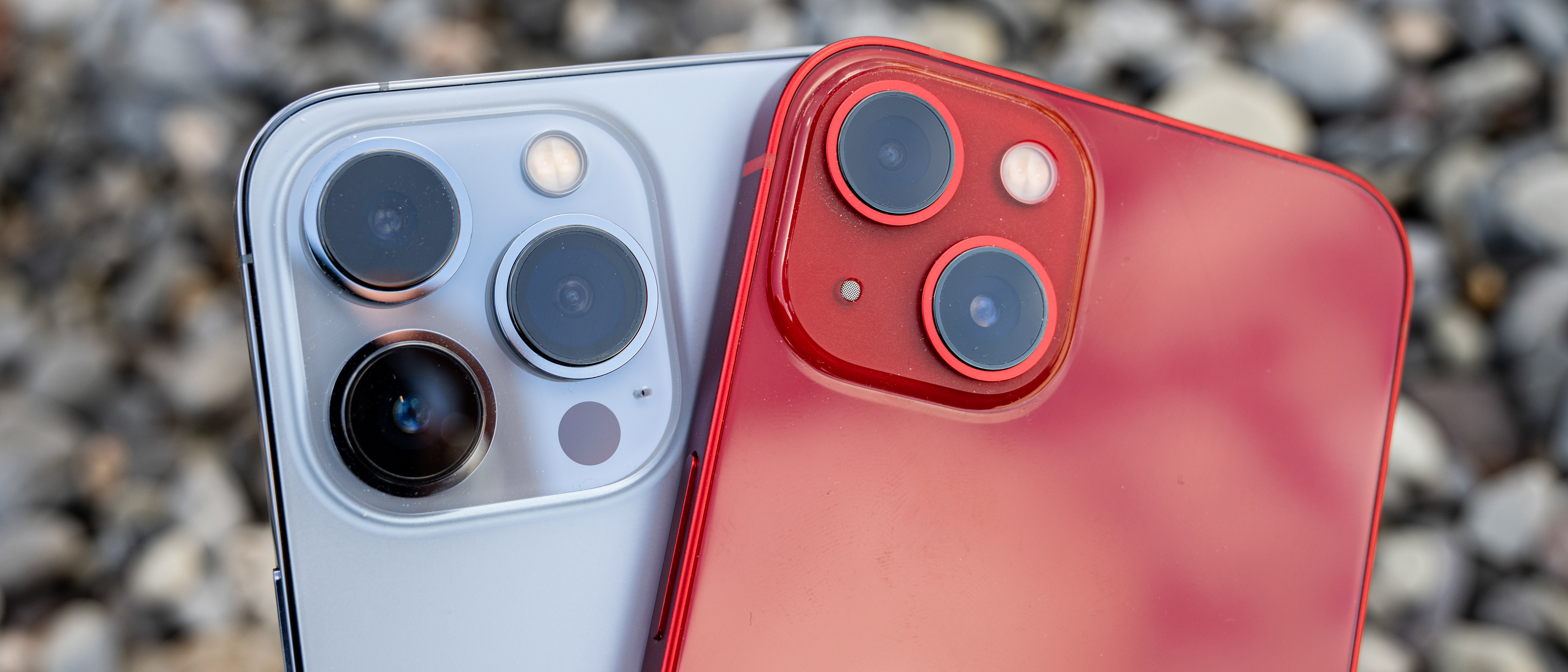
This year’s iPhone 13 range features four different models. We think it’s very likely that most photographers will be primarily drawn towards those with “Pro” in the title - the iPhone 13 Pro and the iPhone 13 Pro Max (both of which have the same camera set up). However, the iPhone 13 offers many of the same specifications, inside a device which is the same size and shape as the iPhone 13 Pro but without quite such a hefty price tag.
So, does that mean you can easily save yourself some cash buying the latest of the iPhone generations but still enjoy a very well-performing smartphone camera? In this piece, we’ll be aiming to find out.
One of the basic differences is a double lens set up (iPhone 13) vs a triple lens set up (iPhone 13 Pro), but there are some other differences between the two which are worth considering before you commit yourself to buying either phone.
Let’s discover how the two measure up…
iPhone 13 Pro vs iPhone 13: Cameras
Why you can trust Digital Camera World

While the iPhone 13 Pro has a triple lens set up offering a standard (26mm, equivalent), ultra wide (13mm) and telephoto (78mm) lens, those opting for the iPhone 13 will miss out on the telephoto lens.
Despite having the same focal lengths, there’s also some differences between the two lenses which you might think are the same. Both share the same larger sensors, but the standard lens on the iPhone 13 Pro has an aperture which is a touch wider at f/1.5 than the f/1.6 aperture of the iPhone 13’s standard lens. The difference is even bigger with the ultra-wide lens, with the 13mm lens on the more expensive model having an f/1.8 aperture, compared to the f/2.4 aperture of the cheaper option.
Read also: Pixel 6 Pro vs iPhone 13 Pro
Another major difference between the lenses is the ability of the iPhone 13 Pro to focus extremely close-up, which the iPhone 13 simply doesn’t have. You also can’t record in Apple’s ProRAW format (DNG), so there’s not quite the same scope for adjusting images after the fact in editing software such as Photoshop. How much you are bothered by this is likely to be down to personal preference, but it’s a clear indicator of the more beginner-type audience Apple expects to be interested in the iPhone 13.

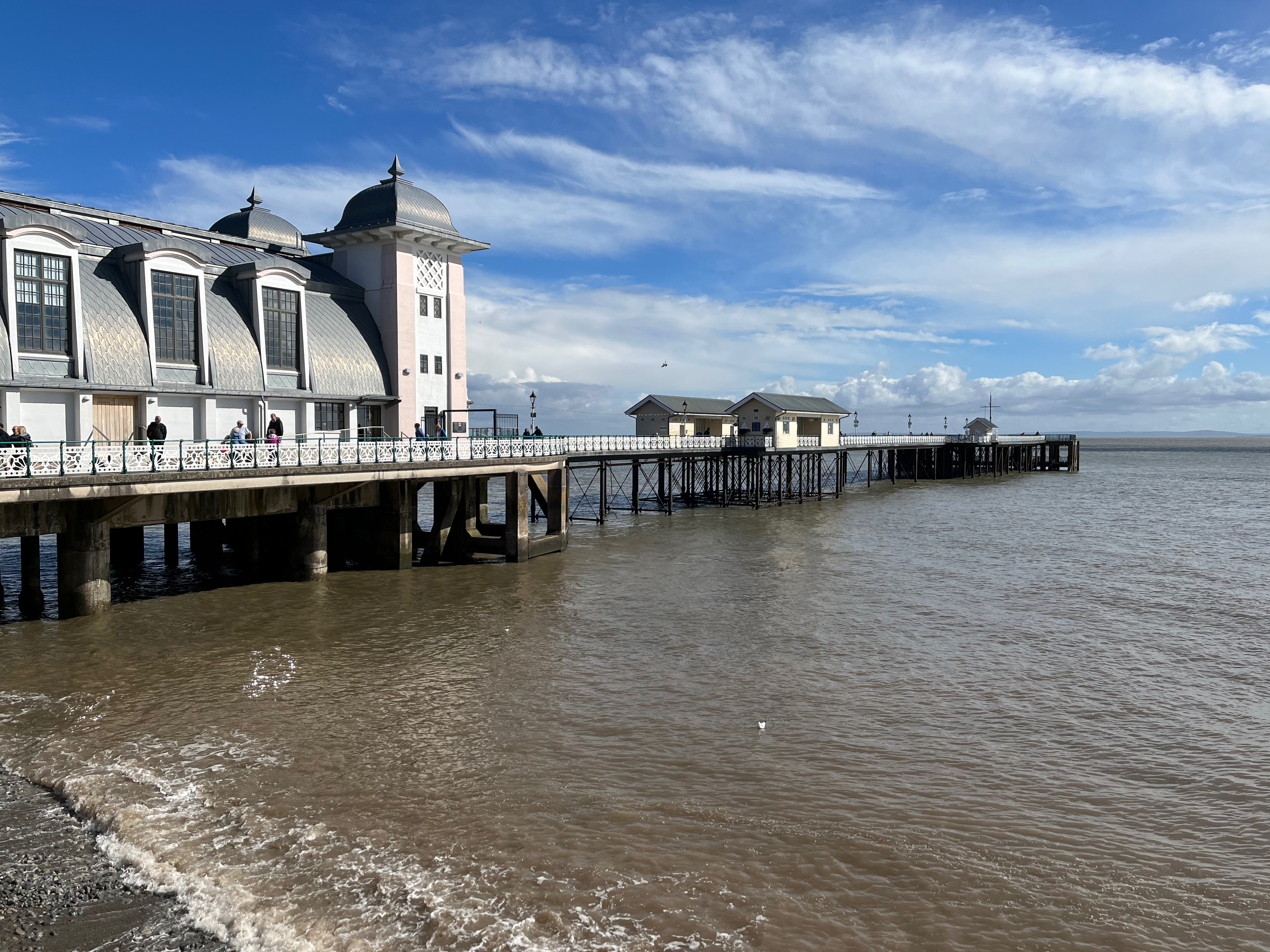
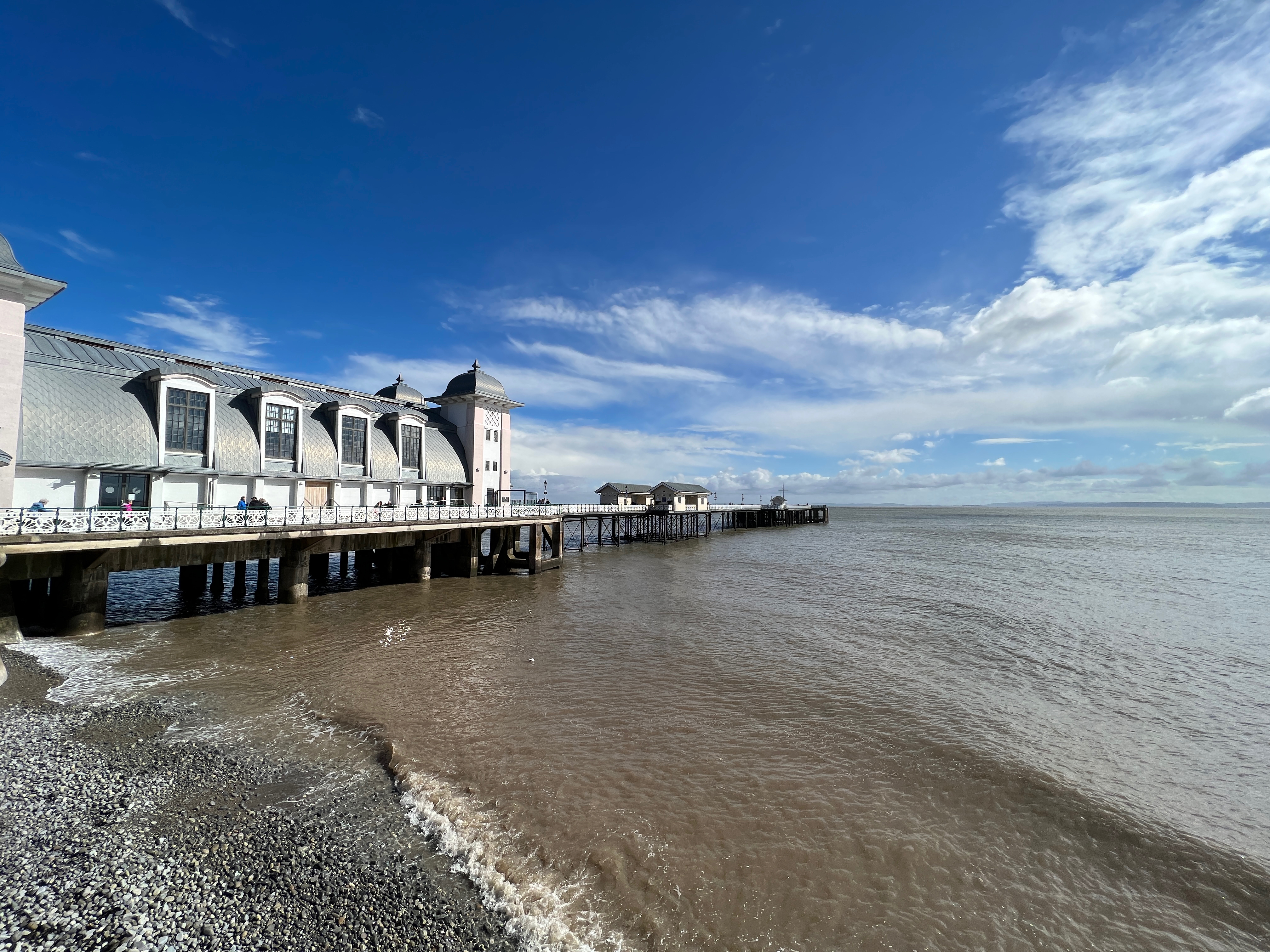
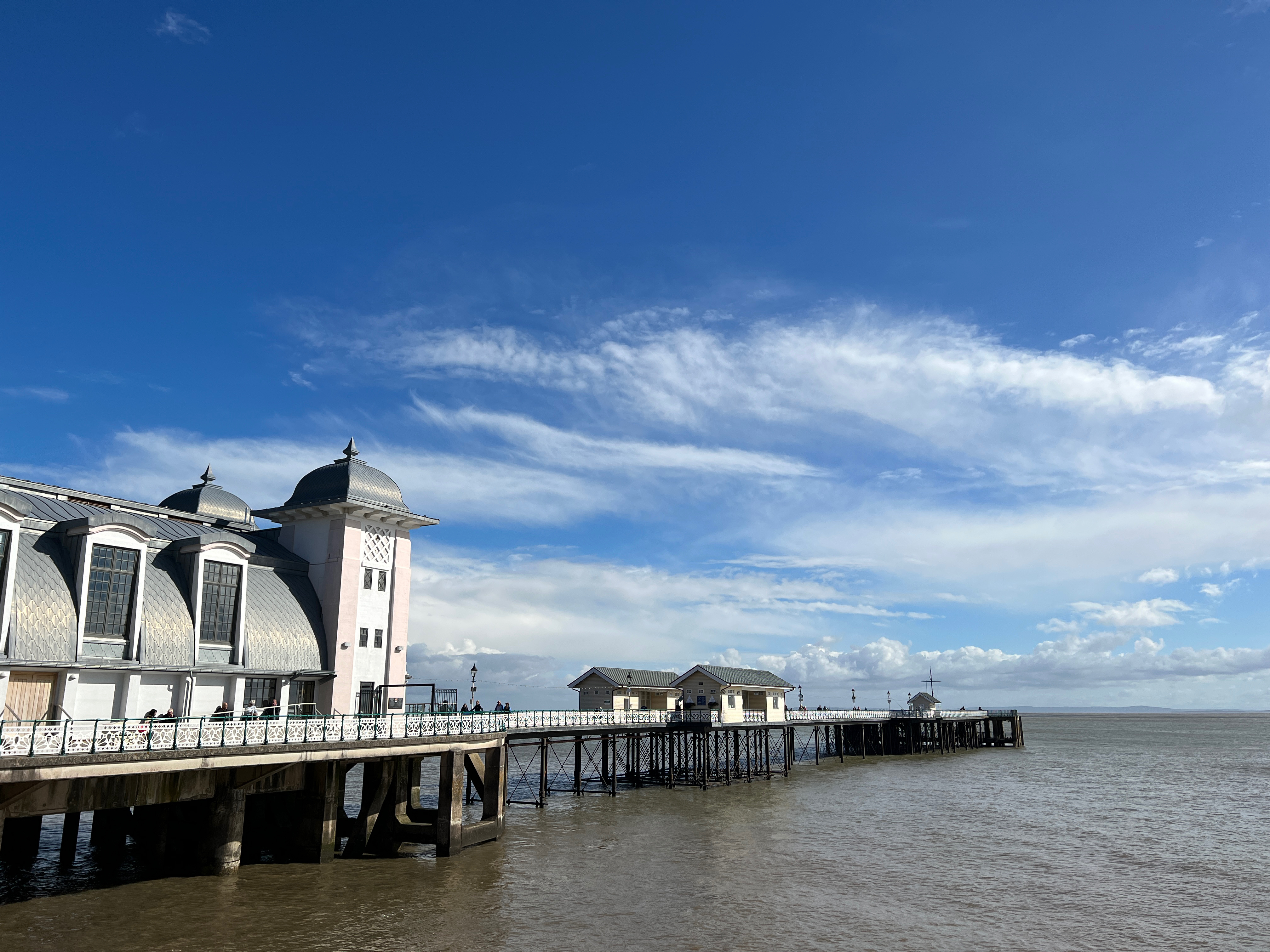
The LiDAR Scanner found in the iPhone 13 Pro is not seen in the iPhone 13. You can see this by flipping both models over and playing spot the difference around the camera modules - only the iPhone 13 Pro has the large black circle which indicates the scanner. As this is designed to improve autofocusing speeds particularly in low light, we should expect a better performance from the more expensive model.
A new addition for both models is Photographic Styles, allowing you to add a certain look to your images at the point of capture. There’s a few different options, which can also be further customized if you require
Both of the iPhones here have the A15 Bionic chip, but only the iPhone 13 Pro has the 5-core GPU which means that Apple claims it to be the “fastest chip ever” for iPhones. The iPhone 13 has a 4-core GPU which it still claims to be “faster than the competition”.
iPhone 13 Pro vs iPhone 13: Night mode and low-light shooting
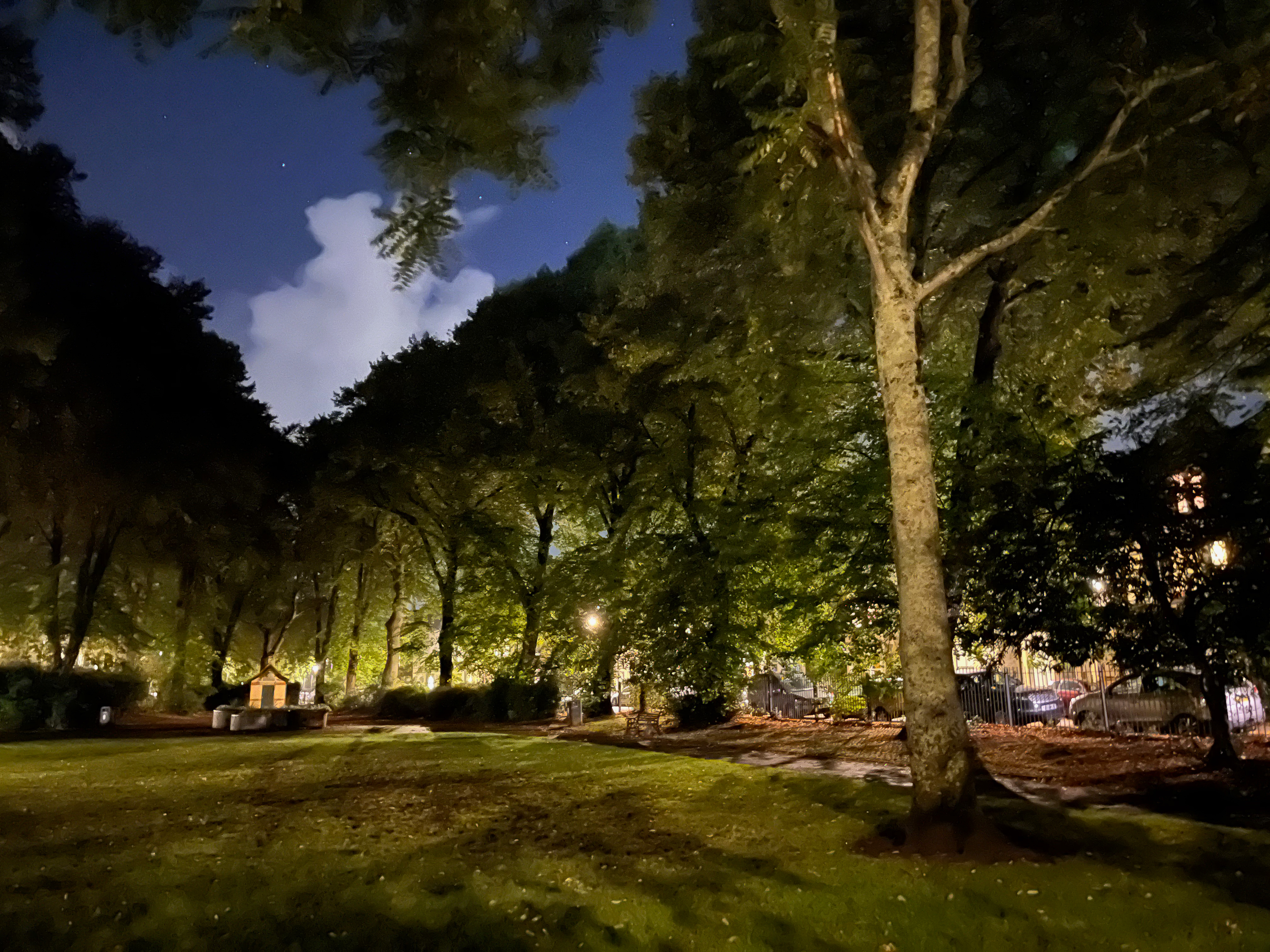
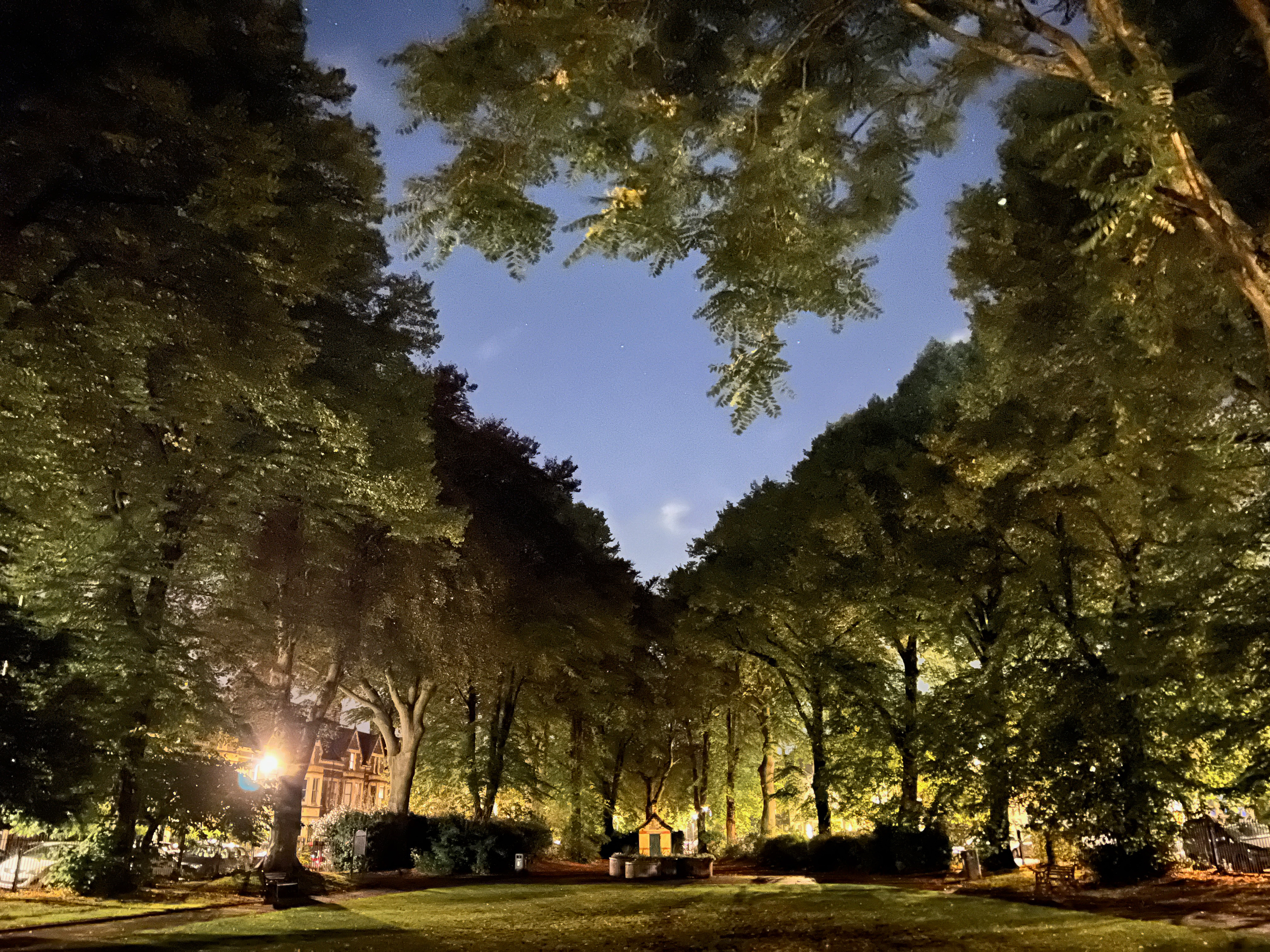
Both the iPhone 13 Pro and the iPhone 13 have a low-light Night mode that automatically activates when the phone detected that light levels are on the low side. Both models also have Deep Fusion, which is designed to improve the appearance of low-light shots.
That said, however, given the contrasting light gathering capabilities between the two phones lenses, we can see a clearly marked difference between the two in real-world situations, particularly between the two ultra-wide-angle lenses. As we’d expect, the iPhone 13 Pro puts in a much better performance here - so if you’re consistently shooting in low light, it’s something to consider.
iPhone 13 Pro vs iPhone 13: Portrait mode



Portrait mode is available on both phones, but as the iPhone 13 does not have a telephoto lens, you only get afford one focal length to choose from when using it.
With the iPhone 13, all you can take is “environmental” type shots, which show the subject quite clearly in their context, albeit with a nicely blurred background. With the iPhone 13 Pro you can do this, but you can also tap the 3x zoom button to create more traditional style (closer) portraits too.
Another noticeable difference is the ability to use Night Mode and Portrait mode in combination with the iPhone 13 Pro, something which the iPhone 13 isn’t capable of doing. If you like taking lots of shots of friends and family in a variety of lighting conditions, the iPhone 13 Pro is the much better option.
iPhone 13 Pro vs iPhone 13: Video
iPhone 13: 4K video sample
iPhone 13 Pro: 4K video sample
Both the iPhone 13 and the iPhone 13 Pro offer the ability to record in resolutions up to 4K, while an interesting new feature shared across both phones is “Cinematic Mode”.
This essentially creates a shallow depth of field effect for moving images, rather than just stills. When you’re using this, you can only record in Full HD (rather than 4K), but it’s still a fun option to use to create a more polished look for certain subjects.
It seems to work equally well on both models, but again, like Portrait mode, you get the option to shoot at 3x with the iPhone 13 Pro as well as 1x, which is the only option with the iPhone 13.
The iPhone 13 Pro is going to have the ability to record in “ProRes” (Apple’s professional format) later in the year, something that the iPhone 13 won’t offer at all. It’s worth noting that only iPhone 13 Pro devices with at least 256GB memory will be allow you to record in 4K due to the size of the files created by ProRes.
Both models are good for video, but for vloggers and those looking for as much flexibility as possible when it comes to moving imagery, the iPhone 13 Pro is perhaps the wiser investment.
iPhone 13 Pro vs iPhone 13: Screen & Design
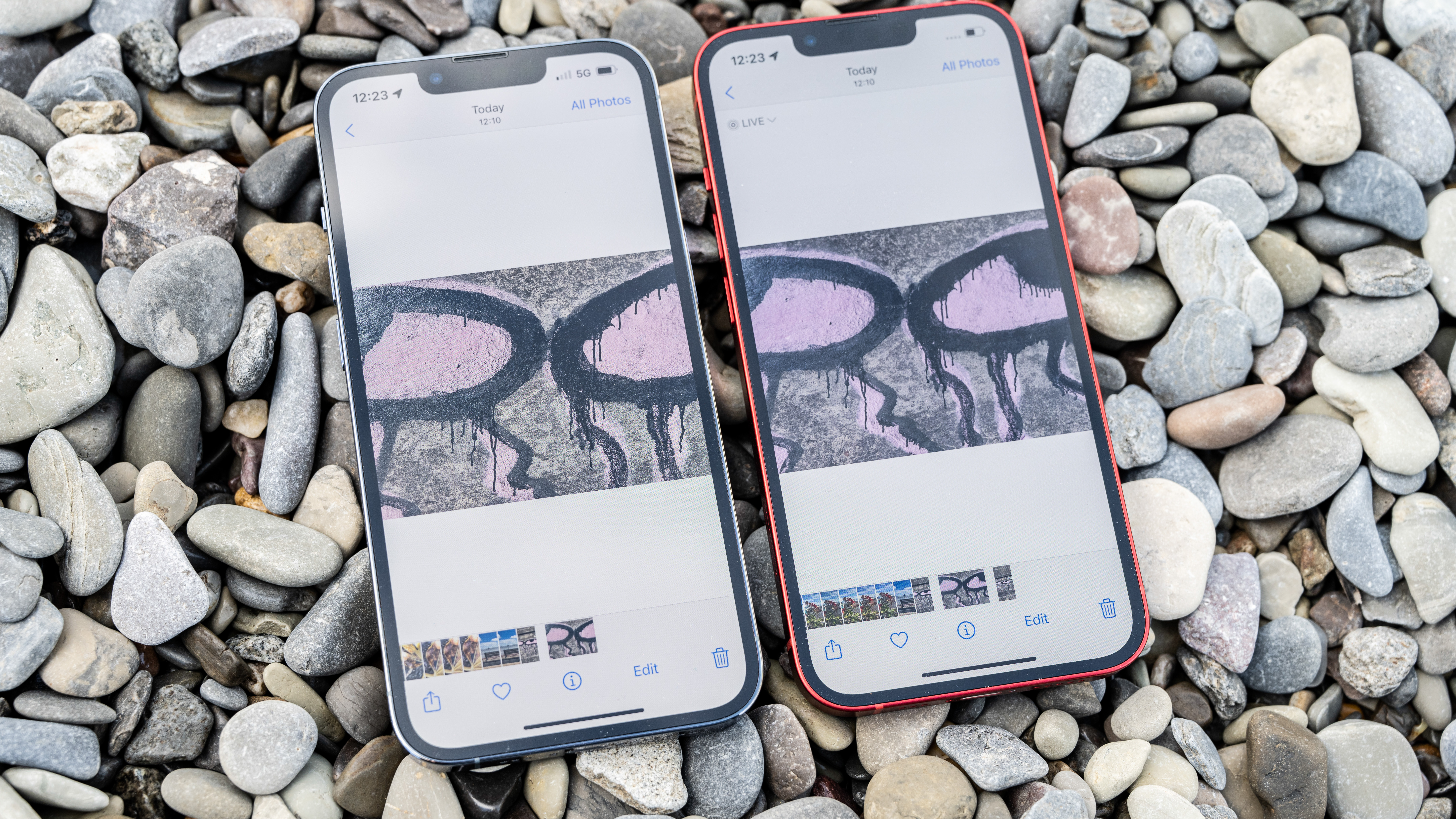
In terms of size and shape, the iPhone 13 and iPhone 13 Pro are exactly the same. The exact measurements are 146.7 x 71.5 x 7.65mm, but the iPhone 13 Pro is a little bit heavier at 203g (compared to 173g).
Both models feature a 6.1-inch Super Retina XDR display with a 2353 x 1170 pixel / 460 psi resolution. The iPhone 13 Pro is a little brighter (1000 nits vs 800 nits), while it also comes with Pro Motion Technology with adaptive refresh rates up to 120Hz. In theory this should make the iPhone 13 Pro smoother to look at, but in practice, it’s very hard to spot a huge amount of difference, even when looking at the two phones side to side.
A ceramic shield front is used for both models, good news for the clumsy among us, while the other difference is that the iPhone 13 Pro uses surgical grade stainless steel, while the iPhone 13 uses aerospace grade aluminum. Given that steel is harder than aluminum, we can expect that the iPhone 13 Pro will withstand scrapes a bit better than the iPhone 13 - but this isn’t something we’ve tested extensively.
In terms of splash, water and dust-proofing, both models offer an IP68 rating, meaning you can dunk them in water as deep as 6 metres and for as long as 30 minutes.
iPhone 13 Pro vs iPhone 13: Battery & Capacity

Although Apple keeps specific battery-capacities to itself, we can use information such as maximum playback time to gauge the battery life of either model.
The iPhone 13 Pro offers 22 hours, while the iPhone 13 offers 19 hours. Given both devices are the same size and virtually the same weight, it seems fairly likely that both are using the same battery, but the faster processor of the iPhone 13 Pro probably gives the more expensive model the edge when it comes to performance.
You shouldn’t be overly worried either way, as we’ve found that in general / average usage, both models last until the end of the day, with it only running low if you’re having a particularly snap-happy day.
Both of the models only come with a cable (and no charging block), as Apple assumes that you will already have one of these. If you have a 20W adapter, you can fast charge both phones up to 50% in just 30 minutes.
MagSafe accessories are also compatible with both models, which includes a fast wireless charger. You can charge either phone wirelessly with other types of wireless chargers, they just won’t be as fast.
Both the iPhone 13 and the iPhone 13 Pro offer a base-level capacity of 128GB, but only the iPhone 13 Pro is available with 1TB of storage space - the iPhone 13 maxes out at 512GB.
iPhone 13 Pro vs iPhone 13: Price

Here’s the big difference that most people will be interested in - the price.
You may be surprised to discover that the difference in price isn’t as huge as you might imagine, and given that you get a lot of extra capability for the additional outlay, you may consider it worth it.
The 128GB iPhone 13 will set you back $799 / £779, compared to $999 / £949 for the 128GB iPhone 128GB, a difference of $200 / £170. If have another iPhone to trade in, or you’re looking at phones available as part of a contract, the prices may well be different.
Colors are also different between the two different devices, with the iPhone 13 Pro’s color options being perhaps a little more on the “serious” side, with Graphite (Black), Silver, Gold and Sierra Blue. Meanwhile, the iPhone 13’s options are a little more fun with Pink, Blue, Midnight (Black), Starlight (Silvery white) and Red.
iPhone 13 Pro vs iPhone 13: Conclusion
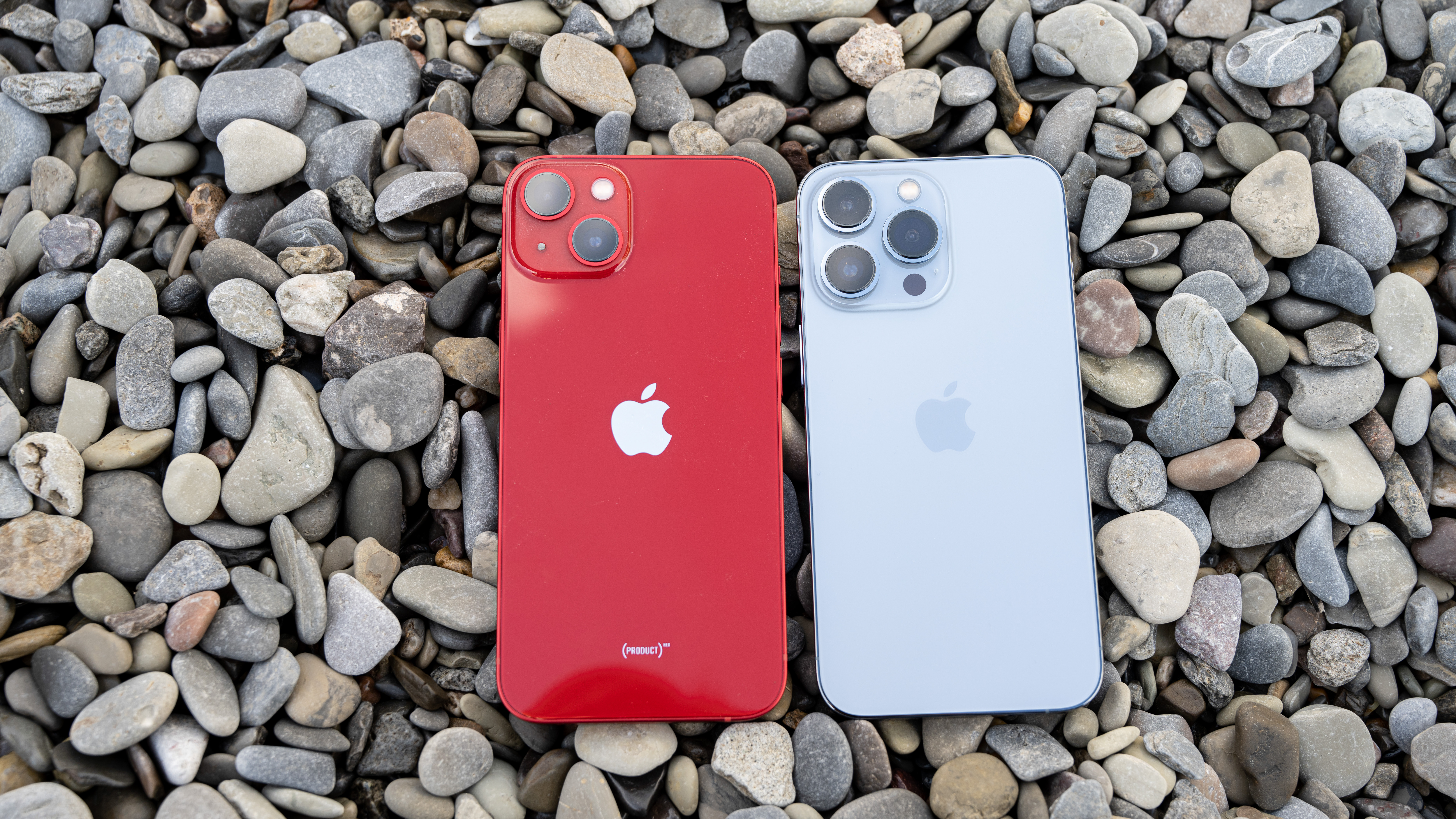
If you’re trying to decide between the iPhone 13 and the iPhone 13 Pro, you may want to consider exactly how much you use the on-board camera of either device.
For those who consider the photographic capabilities of their smartphone to be of utmost importance, it’s definitely worth spending the extra money to get the better performing smartphone - and arguably, having to pay less than £200 to get all you do get from the Pro version is well worth it for that type of user.
To summarize, you get an extra lens (telephoto), raw format shooting, the ability to focus close-up, a better performing Portrait mode and better video and low-light capability. Once you start adding all of those together, you can see that the iPhone 13 Pro is quite significantly the better option.
Other device specifications show less of a contrast. Both offer 5G connectivity, both have a body and screen design which is pretty similar, and both offer extensive battery life. The iPhone 13 Pro’s chassis is a little bit tougher, which may pique the interest of the clumsy among us.
Overall, if you’re an enthusiast photographer, it’s the iPhone 13 Pro which you should get if budget allows, but you’ll still be left with a nicely performing model if you opt for the iPhone 13.
Read more:
• Best iPhone for photography
• iPhone 11 Pro vs iPhone 12 Pro
• iPhone 12 Pro vs Max
• These are the best camera phones
• The best phablets
• Looking for the best budget camera phones? Try these!
Get the Digital Camera World Newsletter
The best camera deals, reviews, product advice, and unmissable photography news, direct to your inbox!
Amy Davies has been writing about photography since 2009, and used to be a colleague on Digital Camera magazine and Techradar.com. She now works as a freelance journalist writing for nclude Amateur Photographer, Stuff, Wired, T3, Digital Photographer, Digital Camera World, TechRadar, Trusted Reviews, ePhotozine and Photography Blog. She has an undergraduate degree in journalism and a postgraduate diploma in magazine journalism, both from Cardiff Journalism School.

